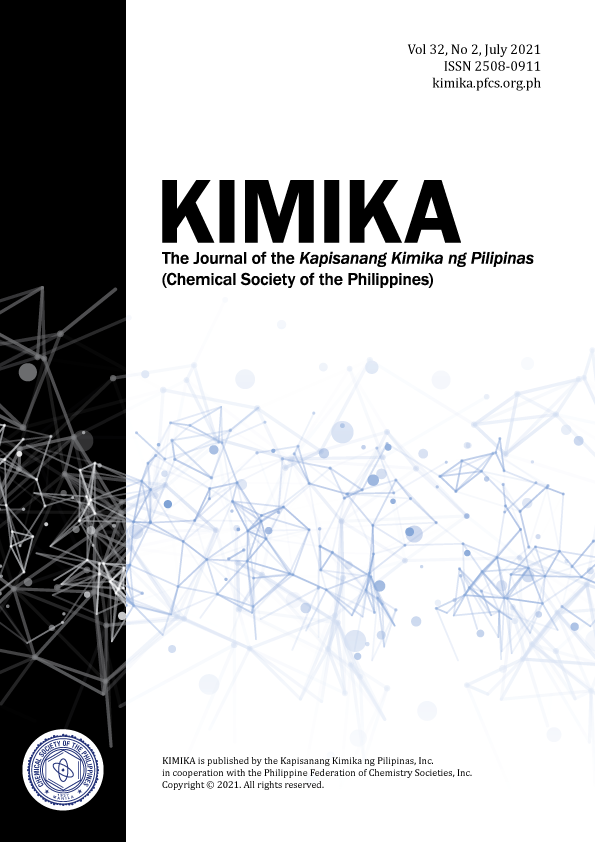QSAR of Lipid-Coated Virus Inhibition by Fatty Acids and Monoglycerides Using Electropological Descriptors
DOI:
https://doi.org/10.26534/kimika.v32i2.26-40Keywords:
electrotopological state, quantitative structure activity relationships, lipid-coated virus, fatty acids and monoglycerides, virus inhibition, SARS-CoV-2 virusAbstract
E-State QSAR models were developed for the inhibition of a lipid-coated virus with a set of 19 fatty acids (FA) and their monoglycerides (MG). The FA and MG were also divided into two subsets to improve correlations, the saturated (n = 12) and the unsaturated set (n = 7). QSAR of the sets yielded better correlation statistics; the saturated FA and MG gave r2 = 0.87, s = 0.26 while the QSAR of the unsaturated FA and MG gave r2 = 0.9999, s = 0.0041. The combined set model however yielded only r2 = 0.81, s = 0.32. Statistically satisfactory four and five variable models for the saturated and the unsaturated respectively and three variable model for the combined set FA and MG were developed. Structure interpretation is given for each variable emphasizing their effects on the resulting viral inhibition (pIC values). A leave-one-out method (LOO) was applied to investigate the predictive quality of each of the QSAR equation. This predictive quality of the multiple regression equation will be useful in the prediction of new potential antiviral compounds against lipid-coated virus. This paper hopes that the study could also be applied to SARS-CoV-2 virus, which is also a lipid-coated virus.
Downloads
Published
How to Cite
Issue
Section
License
Authors who publish with this journal agree to the following terms:
- Authors retain copyright and grant the journal right of first publication with the work simultaneously licensed under a Creative Commons Attribution License that allows others to share the work with an acknowledgement of the work's authorship and initial publication in this journal.
- Authors are able to enter into separate, additional contractual arrangements for the non-exclusive distribution of the journal's published version of the work (e.g., post it to an institutional repository or publish it in a book), with an acknowledgement of its initial publication in this journal.
- Authors are permitted and encouraged to post their work online (e.g., in institutional repositories or on their website) prior to and during the submission process, as it can lead to productive exchanges, as well as earlier and greater citation of published work (See The Effect of Open Access).





